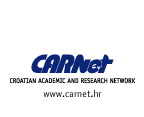

|
||
 |
||
 |
||


| Authors: Davor Illeš, Iva Alajbeg, Ivica Pelivan, Melita Valentić – Peruzović, School of Dental Medicine, Croatia | | Full paper | Presentation
| |
Abstract
Since year 2000 considerable efforts were invested in using Information technologies (IT) as base technologies for improving dental curriculum of Gnathology. However there were significant problems with utilization of a Web as a new media. For instance, the problems with acceptance of such media from both teachers and students and unavailability of adequate technical support. That is why slower linear approach for utilization of IT technologies was accepted.
At first web site was developed which was served as a student’s message board about the curriculum. At later stage this web site was updated with educational materials provided by teachers which had become primary learning materials. These materials were continuously improved and enriched with multimedia files and programs such as Flash movies, video and interactive pictures and have become valid learning materials for students of dentistry. Our efforts were recognized by Croatian Ministry of Science and Technology and supported as an IT project.
In second stage it was decided that knowledge evaluation process was very time consuming and had threatened to compromise the amount of time teachers had to spend with students. Again IT was successfully utilized and quiz based on ASP technology and Microsoft's IIS web server was developed. Quiz had incorporated a large database of questions with five answers of which only one was correct. Students were answering quiz form by clicking on a correct answer.
Time saved by new way of examination has been used for further improvements in educational process. New content was added – clinical exercise and student's seminars. During clinical exercise every student had to examine another student and fill out a questionnaire which have already been prepared for database input. According to certain parameters (logical connections between imputed data) clinical exercise was automatically graded and points gathered were added to the points from “written” exam. Web interface that enabled input of the data collected during the exercise at home or from a library was developed and interconnected with the “written” exams database.
Student's seminars were conceived as a student produced lecture on a particular theme Themes were given to students at a beginning of semester. Every lecture lasted for at most 10 minutes, and had to be made by Microsoft Power Point or similar presentation program. It also had to be handed in a written form. In spite of a initiate resistance from students and need for additional efforts, this form of self education is now well recognized between students and staff as a valuable experience. The best seminars from a previous generation are presented on Gnathology web pages and they provide additional valuable knowledge sources.
Final stage of our effort to introduce IT in dental education included a self grading and curriculum grading questionnaires.
The purpose of a self grading questionnaire was for students to grade their colleagues’ seminar works, which had a small but noticeable impact on every student's final grade. Special mathematical formulas were used to prevent over grading (giving everyone a maximum number of points) and stocking (“I'll give you if you give me” principle). Later analysis revealed that student's self grading was in statistically significant correlation with grades from written exams and grades awarded by the staff for their seminars.
In curriculum grading questionnaire students were evaluating quality of the program, suggesting improvement and evaluating teachers. This student's response was also part of a database in which rest of the data was imputed and it is an integral part of Gnathology curriculum.
It has been our experience that IT as technology has improved the quality of educational process by freeing student's and staff of tiresome routines. This savings were used in making the whole educational process more creative and “evidence based”.